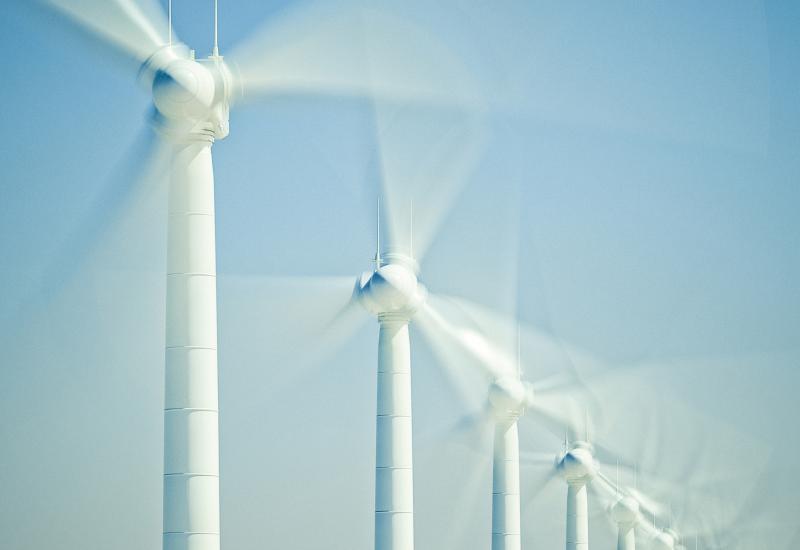
Phasing out of the brown economy
- 14 September 2022 (5 min read)
Transition bonds will play a vital role in ushering in a green economy. Here’s what you need to know.
Most countries’ economies are based on a few different systems, specifically a mix of “brown” and “green.” Fossil fuel consumption drives economic development in a brown economy, while a green economy relies on more efficient energy sources and smarter, intentional management of ecological scarcities.
Now, countries and corporations around the world are on the cusp of an energy transition on an unprecedented scale. Fully transitioning from “brown” to “green” growth can mitigate the impacts of climate change, create more sustainable production and consumption, and increase quality of life. Here’s how transition bonds can help make it happen:
From brown to green — why it matters
The brown economy poses numerous social, economic, and environmental threats. From water contaminated by industrial run-off to cities enveloped by smog, the brown economy’s cost to public health is clear. According to 2018 research from Harvard University, fossil fuel air pollution accounted for 1 in 5 deaths worldwide — 8 million people in total.1 The World Bank also estimates that air pollution alone costs the global economy more than $5 trillion annually.2 The cost of caring for those affected by the brown economy puts a considerable strain on healthcare systems worldwide, and low-income countries disproportionately face the brunt of the brown economy’s damage.
The green economy is the alternative ESG-focused framework investors have been searching for. Instead of papering over environmental cracks, the green economy tackles the root causes behind the brown economy’s social and environmental costs. The green economy’s cleaner consumption and economic development approach can produce a powerful domino effect. For example, redesigned energy grids make cleaner transport systems possible, encouraging more sustainable modes of movement that cut air pollution and increase overall quality of life.
Making the green economy happen
Climate change isn’t slowing down. In fact, the stakes are rising. To fulfill the Intergovernmental Panel on Climate Change’s mission to reach a 1.5-degree world, the average annual investment in the energy system needs to be roughly $2.4 trillion through 2035 — nearly 2.5 percent of global GDP. By 2050, annual investment in efficient energies and low-carbon energy technologies needs to increase fivefold from today’s current investment levels.
To meet the universal access and clean air goals outlined under the International Energy Agency’s (IEA) Sustainable Development Scenario3 , global demand for coal needs to fall by more than 50 percent by 2040. Given this projection, the share of fossil fuels in power generation should decline from nearly 40% today to less than 10 percent by 2040.4
Investors can use the proceeds from green bonds to finance eco-friendly projects and help mitigate climate change, but there’s an opportunity to make a more significant impact here. There are “brown” companies that want to become “green” in the future, but some of these firms may not have enough eligible projects to issue green bonds as it currently stands. That’s where transition bonds can come into play.
Transition bonds, designed for companies in the energy sector or greenhouse gas-intensive industries, are any form of bond in which the proceeds are used to fully finance, partly finance, or refinance eligible transition projects. Through transition bonds, investors can drive tangible stakeholder value and move the needle for companies that are not yet fully green. These bonds serve as a viable recourse for firms that might not possess sufficient green assets to finance projects but, in the meantime, do possess the capital needed to reduce their carbon footprint.
Going green with AXA IM
It’s everyone’s responsibility to help reverse climate change, but there’s more than one way to contribute to a greener, healthier world. Companies that still have ties to fossil fuels or invest in less than sustainable industries aren’t excluded from the energy transition. Transition bonds allow companies to finance transition projects even if they’re still in the early stages of their sustainability journey, driving value as the economy gradually shifts from brown to green.
All transition bond strategies should be intentional, measurable, and material to a company’s business, and AXA IM’s four-pronged approach ensures clients can meet these criteria.
Our approach to transition bonds is based on four core components* — use of proceeds, a rigorous process for project evaluation and selection, management of proceeds, and reporting. AXA IM clients can invest in transition projects in pre-defined categories such as energy, transportation, and industry, and we take the time to evaluate each potential project according to our high standards. We look for a clear description of eligible assets, eligibility criteria, and the asset selection process, plus expected outcomes. Transition bond projects must be intentional and actionable to drive change and moreover, we need a clear and commonly accepted definition of what transition projects/assets are for the market to truly start.
There are also safeguards in place to ensure all proceeds are allocated to eligible projects and all proceeds are formally tracked. We insist on regular, comparable, and transparent reporting on the use of proceeds, environmental performance, and outcomes. This best practice can allow us to more accurately measure the impact of our portfolios and ensure we’re yielding results for clients while also doing our part to ease the path to a green economy.
Investments involve risks, including the loss of capital.
- U291cmNlOiBodHRwczovL3d3dy5oc3BoLmhhcnZhcmQuZWR1L2MtY2hhbmdlL25ld3MvZm9zc2lsLWZ1ZWwtYWlyLXBvbGx1dGlvbi1yZXNwb25zaWJsZS1mb3ItMS1pbi01LWRlYXRocy13b3JsZHdpZGUv
- U291cmNlOiBodHRwczovL3d3dy53b3JsZGJhbmsub3JnL2VuL25ld3MvaW5mb2dyYXBoaWMvMjAxNi8wOS8wOC9kZWF0aC1pbi10aGUtYWlyLWFpci1wb2xsdXRpb24tY29zdHMtbW9uZXktYW5kLWxpdmVz
- U291cmNlOiBodHRwczovL3d3dy5pZWEub3JnL3JlcG9ydHMvd29ybGQtZW5lcmd5LW1vZGVsL3N1c3RhaW5hYmxlLWRldmVsb3BtZW50LXNjZW5hcmlvLXNkcw==
- U291cmNlOiBodHRwczovL3d3dy5pZWEub3JnL3JlcG9ydHMvbmV0LXplcm8tYnktMjA1MA==
- U3ViamVjdCB0byBjaGFuZ2U=

Responsible Investing
We actively invest for the long-term prosperity of our clients and to secure a sustainable future for the planet.
Learn moreDisclaimer
This page is for informational purposes only and does not constitute on the part of AXA Investment Managers or its affiliated companies an offer to buy or sell any investments, products or services and should not be considered as a solicitation or as investment, legal or tax advice, a recommendation for an investment strategy or a personalized recommendation to buy or sell securities.
Due to its simplification, this document is partial and opinions, estimates and forecasts herein are subjective and subject to change without notice. There is no guarantee forecasts made will come to pass. Data, figures, declarations, analysis, predictions and other information in this document is provided based on our state of knowledge at the time of creation of this document. Whilst every care is taken, no representation or warranty (including liability towards third parties), express or implied, is made as to the accuracy, reliability or completeness of the information contained herein. Reliance upon information in this material is at the sole discretion of the recipient. This material does not contain sufficient information to support an investment decision.